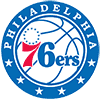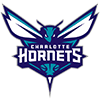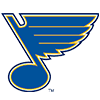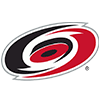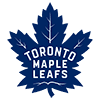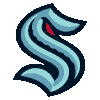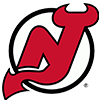Where do I want to draft?
In the NFBC, they employ the Kentucky Derby System (KDS) for selecting draft spots where you rank your draft spots in order of preference. Teams names are then chosen randomly and each team is given their highest draft spot remaining. So while in all likelihood you still need to get picked first to get the top pick (most people leave No. 1 at the top of their KDS, hi Mike Trout), if you like the middle or the back ends, you have a much better shot at getting close to where you want to be than if the order was selected at random. I've had a few questions about where I would like to draft this season so I thought I would take a quick run through that here today.
When I look at my KDS strategy, I focus on the first four rounds as those usually go somewhat to form with ADP, not in the exact order of course, but usually the top 60 picks (in a 15-teamer) feature a large percentage of the top 60 ADP. I believe drafts open up a lot after the fourth round, so it feels like a bit of a waste to try and predict who will be available at draft slots after round four. I also weigh the potential picks in the top four rounds against the fact that I like to be somewhere in the middle of the draft in 15-teamers, as the positional runs can be epic (especially closers) and you can miss them on the ends. In addition, I find myself sometimes reaching too much at the end as I fear players won't t come back to me with so many picks in between. There's no better or worse, but I think I draft smarter from the middle. In baseball, I believe you can win from any spot on the board, but ranking your KDS to give yourself what you consider a slight edge is an important practice.
When I look at the first few rounds, I try to find what I consider talent dropoffs, and this year I see one at about pick 18 to 20, depending on how much I trust Chris Sale in Fenway on a given day. So while there is a pretty clear top seven in almost every draft this year and I would love to have any of them, I also like what I can get in the first two rounds picking near the back in a 15-teamer. Picking 13 to 15 is likely going to give a one-two combination featuring two of Anthony Rizzo, Miguel Cabrera, Max Scherzer, Madison Bumgarner, Carlos Correa, Charlie Blackmon and Noah Syndergaard. Choosing from that group depends on personal preference, but I'd imagine everyone can find two in that group they like and you're guaranteed to get two of them (or someone from higher on the board if there's some slippage). Looking a bit forward, I also like some of the names at the 45/46 turn, although I think when the NFBC Main Event comes around, some of the starting pitchers who may have been going in that 42-50 will get pushed up and be available. I'm currently weighing my usual desire to be in the middle of the draft against what I think gives me a nice start; right now I'm leaning toward the better start. I think I'll have one and two on the top, as I can't pass up the chance for Mike Trout or Clayton Kershaw. I'm giving serious consideration to going to the back after that. Finally, in my rankings, assuming Kershaw goes second (I think he will in a lot of drafts), I don't have a strong preference between the hitters from three to seven, so I'm going to flip the order of those so I can have a higher pick in round two.
In 12 teamers, I'm not as worried about the positional runs with less picks in between if you happen to be on an end, so I'm more likely to attack what I like the first four rounds. I like getting two of the top 18 to 20 there (again, depends on your personal drop-off spot) so I'm currently a back end of the draft fan. Picks six to nine can be interesting, as they give you an elite hitter to start and still provide a second player in that top 18 to 20. Something like Goldschmidt /Syndergaard, Harper/Scherzer or Machado/Correa are all possible depending on your draft and are appealing. Pairing any of those combos with two more players in the top 40 can give you an exceptional start to your teams.
We have mostly discussed theories and procedures so far in the column, so with a large number of drafts happening this weekend or the next, let's take a quick dive into a few players I like and a few I don't. It's boring to choose early draft picks to target whom I like and late picks whom I don't, so I'm flipping that around and discussing some late targets I like but also taking a strong stand against some guys who go in the first 10 rounds. For the ADP numbers referenced, I'm using the NFBC ADP lists and choosing the 80-plus drafts since March 1st to get the most current and accurate numbers possible.
Some late-round targets
The Giants' Middle Infield
Brandon Crawford: Crawford's home run dropoff from 21 to 12 had many considering Crawford's 2016 a disappointment, and as a result, he's now available in drafts at an ADP of 256. Crawford's 21 big flies in 2015 was a big outlier due to his HR/FB rate of 16.2%, which is significantly higher than any other season in his career. Playing 81 games a year at AT&T Park is always going to limit Crawford's home run upside, but his value comes in consistency and across the board contributions. Even with the home run drop, Crawford still hit .275 in 2016 and managed to drive in 84 runs and even tossed in seven swipes. My favorite factor in liking Crawford is the consistent upward trend in his hard hit rate. Since 2013, Crawford has gone from 24.6% to 28.6% to 33.2% to his 35.2% mark in 2016. At the same time, he has reduced his strikeout rate over the last three years. I love the way Crawford is trending and in the 17th or 18th round in a 15-teamer, he's the perfect guy to toss in your MI slot, knowing the floor is solid with a bit of room to run and some upside as he's becoming a better hitter each season.
Joe Panik: Panik had a bad luck 2015 both from batted ball and injury perspectives. He was hit in the head by a pitch on June 18th (by current teammate Matt Moore) and after playing for about 10 days after the beaning, he finally succumbed to the concussion symptoms and spent a month on the DL. After his return, Panik hit a paltry .215, but there's no way to know how the injury affected his final two months. As for the batted ball issues, Panik had BABIP's of .343 and .330 his first two seasons and then crashed down to .245 in 2016. Panik's hard hit rate did drop to 25.6%, but with all the concussion issues, I'm considering 2016 a lost season. Panik makes a ton of contact (under 10% K Rate the last two years) and if he can get the hard hit rate back to the 30% of 2015, the BABIP should come up with the average following. Panik isn't going to break out huge, but we're talking about someone who's being drafted at an ADP of 321. Panik hit .305 and .312, and if you can get a .300 average from a middle infielder that late in the draft, it's a value pick, especially if he finds he way into the two hole at some point in the Giants' lineup.
Last season was a year to forget for Gordon, as he tossed up a .220 average over 445 at-bats and spent time on the DL with a wrist injury. I hate wrist injuries for hitters, and the year was so far out of the norm for Gordon (especially the strikeouts) that I think the wrist could have been an issue even after he returned. Gordon struck out 29.2% of his at-bats in 2016, a huge jump from his career norms, which usually fall in the 19 to 21% range. Gordon did raise his hard hit rate to almost 37%, so he was actually making good contact; he just wasn't doing it often. He's tumbled all the way down to pick 323 in the NFBC ADP, and I love grabbing him there as my fifth or sixth outfielder. I feel a healthy Gordon will return to his normal career strikeout rate, and if he can keep anywhere near the same hard hit rate, he should get back to his .270 ways for 15 to 20 homers and 10 bags. While that line isn't groundbreaking, in the end game, players like that are a nice value and can put you over the top in a league.
Some early-round fades
Of course, Springer is clearly talented and will put up some numbers, but this is a fade for me due to his current ADP of 35.6. When Springer first came to the Astros, he was touted as a speed/power combo guy who could push 30/30, especially after an insane 37 HR/45 SB season between Double and Triple-A in 2013. The homers have finally come around (Springer hit 29 in 2016), but the stolen bases have headed the opposite direction. Springer is not only running less, but he was also bad at it last year. Springer only had nine steals in 2016 and that was on 19 attempts, so he was caught more than he wasn't last year. With that poor percentage, he ran less in the second half, compiling only seven attempts in the final 73 games. As if he needed more reason not to run, Springer will be hitting leadoff in front of Alex Bregman, Jose Altuve and Carlos Beltran, all guys with extra base hit potential. You don't want to get caught stealing with them standing at the plate. While Springer's hard hit rate isn't bad at 33.6%, he has never been someone who has been a plus at batting average so he could quickly become a three category guy, and hitting leading off, even the RBI aren't guaranteed. I just can't see paying for all of that in the third round.
I was a big time Schwarber fader last year (at a much higher ADP) and I'm going back to the well this year at his current ADP of 78. Schwarber clearly has massive power, but that also is paired with a large strikeout rate. In his 2015 half-season with the Cubbies, he struck out 29.2% of the time on his way to a .246 batting average. He did hit 16 bombs with an impressive 39.7% hard hit rate, but again, I am in no way doubting the power. Aside from the strikeouts and the average, my biggest concern with Schwarber is the fact that the Cubs are so deep and so good and Schwarber doesn't have a set position. He may catch some, but the Cubs have Willson Contreras and Miguel Montero there already, so Schwarber will likely man left field in most of his starts. When Schwarber plays left field, Ben Zobrist then moves to second base and that suddenly leaves Javier Baez without a spot to play. If everyone stays healthy, and that is always a big if, it isn't a stretch to see Schwarber sit against a good amount of lefties. In his 2015 stint in the majors, Schwarber was a nightmare against lefties (granted, very small 56 at-bat sample) with a .143 average to go with a .481 OPS. It' s just not hard to fathom the Cubs lineup being better without Schwarber against lefties. Playing time issues often work themselves out via injuries or performance, but in the fifth or sixth round, I don't even want to think about that as a possibility, especially with a guy who is already a possible batting average drain.
Buxton's fantastic September is fueling his rise up the ADP charts this year. The heavily hyped prospect finally broke out at the Major League level with nine homers, 24 runs and 22 RBI while hitting .287 in 101 September at-bats. Maybe Buxton figured it out, and we figured he would at some point, but I'm not willing to use a 9th or 10th round pick (current ADP is 137) to find out. My problem with Buxton is all the months that weren't September. In 298 MLB at-bats in 2016, Buxton hit a brutal .225 with a completely absurd 35.6% strikeout rate. This was after a 31.9% strikeout rate in the majors the year before. Even more concerning is that even in Triple-A, Buxton needed a .382 BABIP to hit .305 because he struck out 27.9% of the time there. Even in his breakout month of September, Buxton fanned 38 times in those 101 at-bats. He has shown nothing to make me think he's ready to hit at the major league level, and if that strikeout rate doesn't come down significantly, there's almost no way he hits for any sort of a decent batting average. Further, if he keeps striking out in third of his at-bats, that kills the number of chances he has to use his wheels to steal bases. I think Buxton is going 50 picks too early and he's probably the biggest fade for me entering 2017.








